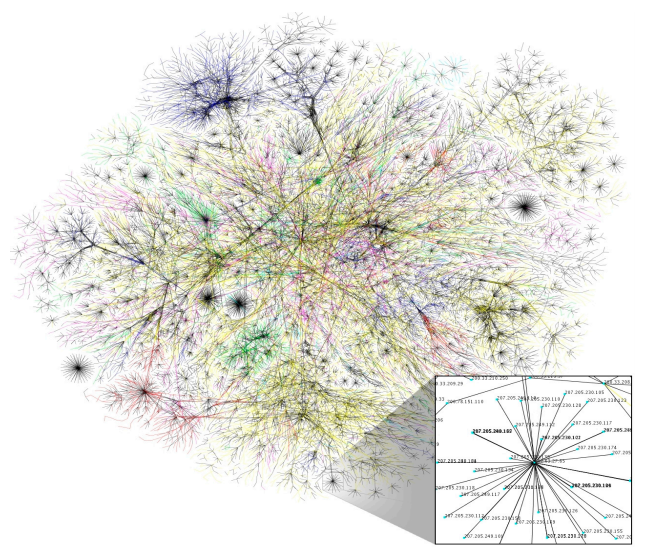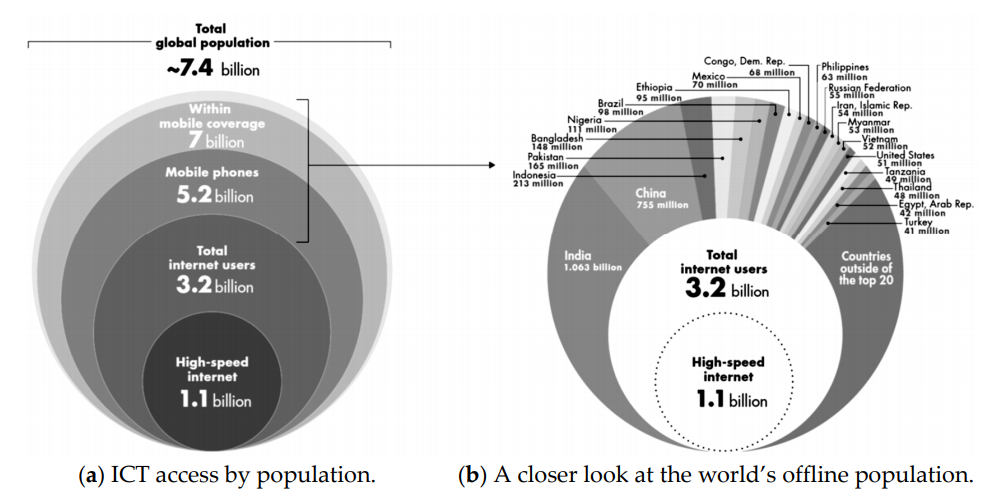ABSTRACT
The very common Internet citizen has a very restricted autonomous capacity to move through the network which is becoming the ever stretching milieu where our lives take place. At the same time, the capacity to manage relevant information from ourselves and the environment we are living in offers new avenues to deal with healthcare, sustainability issues and problems of many different kinds and significant social concern which were previously insufficiently attended. While the actual structure of the Internet, geared by big-data technologies, exhibits a network topology highly concentrated, the authors propose a cyber-subsidiary model which may solve the conundrum where the human condition seem to be trapped in a blind alley.
INTRODUCTION
Internet of Things (IoT) connects people, processes, data, and things, turning information into actions, creating new capabilities and extraordinary opportunities, allowing an allegedly perfect symbiosis in the interaction between peoples and machines anywhere, at any time, using any devices through networking technologies, including wearable’s with intelligent sensors adapted dynamically to the user’s needs. The pillar of IoT is the pervasive presence of a variety of things connected to the Internet and to each other, sensing and collecting data, and interacting with each and with the neighbor’s objects, supported by a technological (re)evolution in many fields from wireless sensors, to nanotechnology.
AN ALLEGORICAL VIEW TO THE STRUCTURE OF THE INTERNET

Figure 1. Small look at the backbone of the Internet, actually less than 30% of the Class C networks reachable by the data collection program in early 2005
Small look at the backbone of the Internet, actually less than 30% of the Class C networks reachable by the data collection program in early 2005. Each line is drawn between two nodes, representing two IP addresses. The length of the lines are indicative of the delay between those two nodes. Lines are color-coded according to their corresponding RFC 1918 allocation as follows: yellow: net, ca, us; magenta: com, org; light blue: mil, gov, edu; blue: jp, cn, tw, au, de; green: uk, it, pl, fr; dark blue: br, kr, nl; black: unknown (Source: English Wikipedia).
High-speed access is restricted to just the 15% of the population, while Internet remains unavailable, inaccessible and unaffordable to a majority of the world’s population (Source: World Bank, License: Creative Commons Attribution CC BY 3.0 IGO).
How can the huge gap between digital society center and periphery be closed? If the offer and demand of ICT resources is exclusively driven by monetary value, as it is in a substantial extent, the used approach to keep pace of customers’ demand cannot suffice to satisfy peoples’ demand, unless there is a minimal equality among people’s purchasing power, which is far from being the case.
The problem is even worse if we consider that telecommunication rates are more expensive the further away you are from the economic center of the Internet (i.e., where more traffic is concentrated), due to the fact that the corresponding service provider is paying more expensive “transit” agreements to interconnect their networks.
Source: León University
Authors: José María Díaz-Nafría | Teresa Guarda
>> IoT based Big Data and Cloud Computing Projects for B.E/B.Tech Students
>> IoT based Networking Projects for Engineering Students
